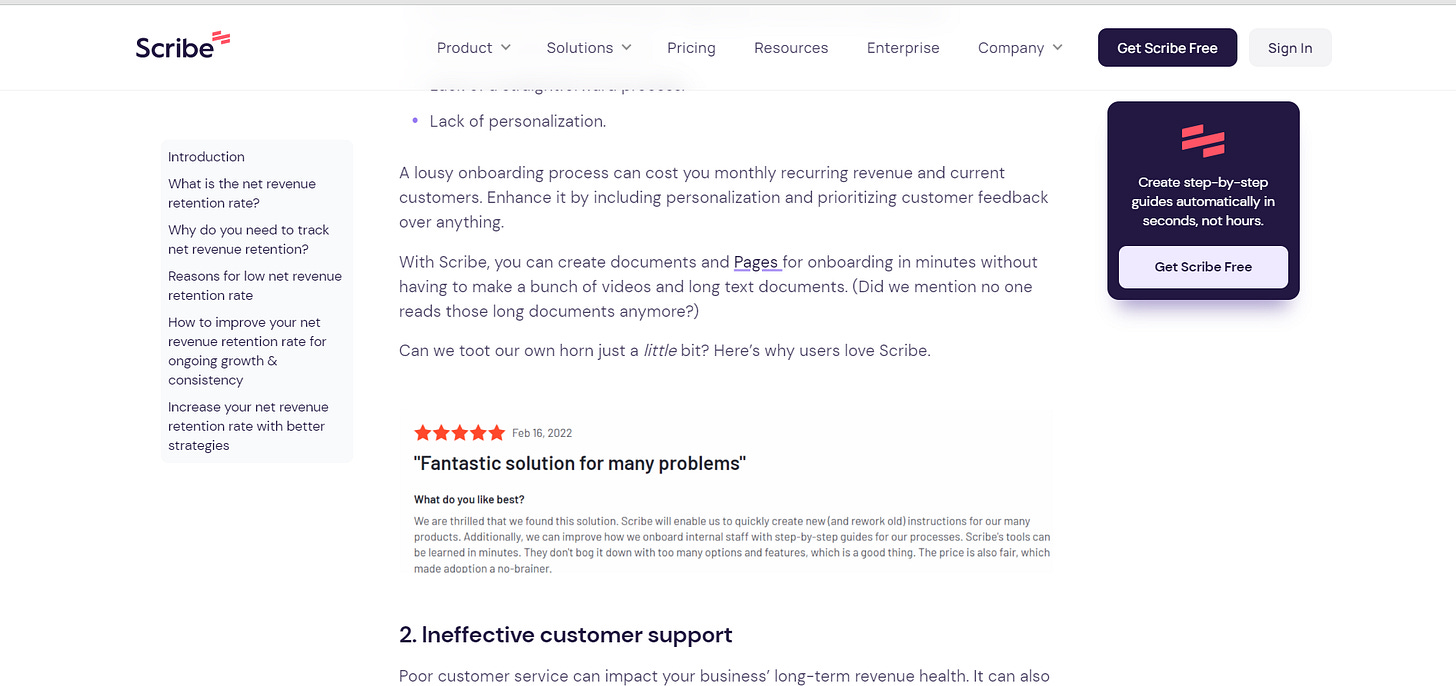Build your brand with product-led storytelling
Product-led storytelling is a popular term, but is it practical? And if yes, how can you master it for your brand?
Heya, Creative Minds!
We, as marketers, know how storytelling is one crucial element in every content piece we create. But at the same time, this word is thrown around everywhere—on social media, blogs, or communities.
And this is why brought you this no-BS newsletter issue on product-led storytelling and how you can nail it in 2023 for your brand.
Understand product-led storytelling…
Product-led storytelling comes under the content marketing umbrella. It's all about brewing your product with your audience's pain points and adding the right quantity of empathy to redirect your audience toward your product.
But why is product-led storytelling so compelling for SaaS brands?
Well, let's dive into the benefits! It helps build customer trust and credibility, establish an emotional connection, and drive customer acquisition, retention, and advocacy. Who wouldn't want that?
Speaking of success stories, let's take a closer look at one of the most successful SaaS companies out there - MailChimp.
It has been in business since 2001, becoming a go-to platform for thousands of organizations, including SaaS brands.
But how did it achieve such success?
It doesn't rely on the PLG approach. Instead, it heavily relies on creating search-engine discoverable content.
P.S. The topic of PLG can be subjective for every brand so ensure you go ahead with this after you’re done with your research.
Apart from helpful content, they also produce entertaining content subtly featuring their product as a tool to help customers achieve their goals.
Through these storytelling efforts, MailChimp attracts millions of customers every month. No wonder it's a massive empire with over 800 employees, a revenue of $800 million, and a valuation of $12 billion.
So, yes, product-led storytelling works when you redirect all your efforts in the right direction. But how can you do the same?
Here's how to create a product-led storytelling strategy
Let's dive into the steps you need to take to make the journey easier for your audience with product-led storytelling.
Identify your brand's unique story and value proposition.
Start by understanding why your audience would sign up for your product over your competitor's. What are those elements that make your brand unique and have the potential to attract as well as retain customers?
Map your customer journey to understand their pain points.
Create a customer journey map to identify the opportunities to tell a product-led story that addresses your target audience's pain points.
To give you a basic example, your customer journey map can include these steps as per your requirements:
Awareness
Consideration
Activation
Engagement
Retention
Advocacy
Incorporate user-generated content to establish social proof
Encourage your satisfied customers to share their success stories, reviews, and testimonials on your website, social media, and other marketing channels to build trust and create an emotional connection with your audience.
If you look at the screenshot below, this is an article for Scribe I wrote, and pay attention to how I added the social proof without being too obvious.
Create compelling product demos and videos using storytelling techniques
Use videos and product demos to showcase the features and benefits of your product in action, and use storytelling techniques like characters, conflict, and resolution to create a compelling product-led story.
I couldn't think of any better example than Veed for this!
If you watch this video, you're initially greeted by the CEO and Co-founder of Veed, and he thanks his audience for all the support, followed by an interactive product demo.
Develop customer success stories and case studies to demonstrate the impact
Use customer success stories and case studies to showcase how your product helped your customers achieve their goals and overcome their challenges, building trust and establishing your brand as a solution to your target audience's problems.
Drift created an extensive library with all the customer success stories, and the way they've portrayed each point is worth looking at.
Leverage social media to reach and engage with your target audience
Use social media platforms to share your product-led stories, UGC, customer success stories, and other relevant content with your audience, engage with your followers, respond to their comments and questions, and encourage them to share their own stories.
Measure the success of your efforts by tracking engagement metrics and customer retention.
Track your engagement metrics, conversion rates, customer retention, and advocacy to see how well your strategy is working, and use these insights to refine your storytelling and improve your marketing efforts over time.
By following these steps, you can create a product-led storytelling strategy that resonates with your audience, builds trust and credibility, and drives customer acquisition, retention, and advocacy.
That's it for today, folks, and we hope you have enjoyed this newsletter. If yes, do share this with your network.
See you in a week again!
Cheers,
Aanchal and Uddalak



Incredible article. Great work Uddalak and Aanchal :)
Found this from Fueler community today morning. Keep up the great work 🔥